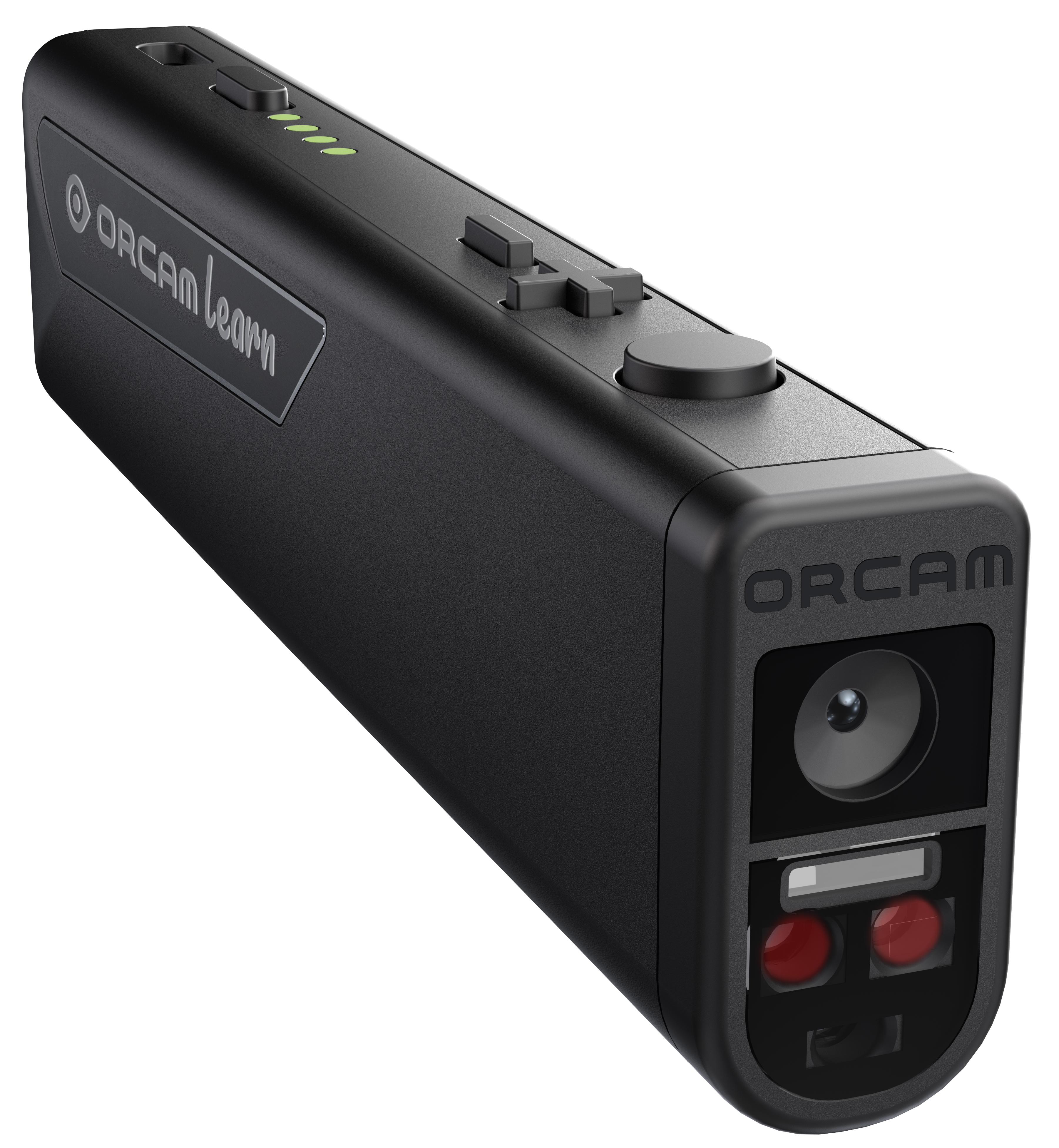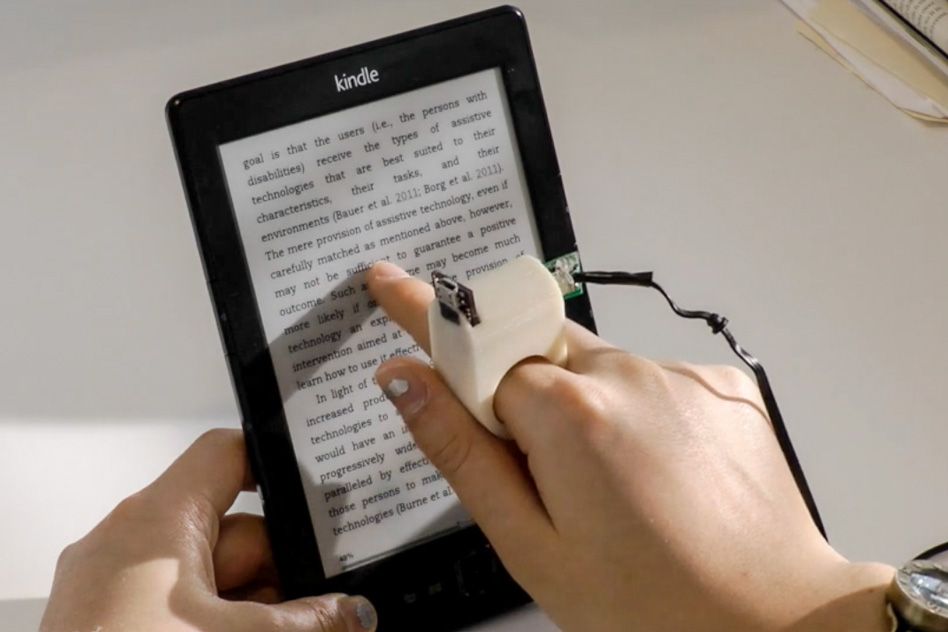An Overview to Life-Changing Assistive Innovation for the Blind and Visually Damaged
The improvement of assistive modern technology has introduced a transformative era for individuals that are blind or visually impaired, offering tools that improve freedom and improve everyday experiences. Innovations such as clever navigating tools and AI-driven applications are redefining exactly how individuals engage with their surroundings, while available analysis services and smart home innovations guarantee to further boost the lifestyle. As these technologies continue to develop, one must think about not only their functionalities however additionally their influence on promoting self-reliance and inclusivity. What does this mean for the future of access?
Smart Navigating Devices
Smart navigating devices are revolutionizing the way people that are visually damaged or blind connect with their environment. These advanced technologies, which integrate GPS, audio comments, and haptic signals, offer users with important information regarding their surroundings, boosting their independence and flexibility.
One famous example is the use of smart canes equipped with sensors that discover obstacles and supply real-time comments via resonances or audio hints. These devices permit individuals to browse intricate environments, such as hectic roads or crowded public spaces, with enhanced confidence. In addition, wearable gadgets, such as wise glasses, are being developed to assist in identifying faces, reviewing text, and determining objects, additionally enhancing the individual's spatial awareness.
Additionally, clever navigating tools are increasingly integrating expert system to analyze information and adapt to customers' choices. This tailored method not only improves navigating performance but additionally promotes a sense of empowerment amongst users. As innovation continues to advance, the capacity for clever navigating devices to develop an extra inclusive and obtainable world for individuals that are aesthetically damaged or blind stays promising, ultimately reshaping their everyday experiences and communications.
Innovative Mobile Applications
Mobile applications are arising as effective devices for assisting individuals that are aesthetically damaged or blind, using a series of performances that boost daily living. These apps harness advanced technology to promote everyday jobs, enhance ease of access, and promote self-reliance.
One group of innovative mobile apps concentrates on visual acknowledgment. Applications like Be My Eyes attach individuals with sighted volunteers using video telephone calls, enabling real-time aid for jobs such as reviewing tags or browsing unfamiliar environments. Applications like Seeing AI make use of artificial intelligence to explain surroundings, reviewed text, and determine items, supplying users with vital information at their fingertips.
An additional substantial location is navigation and alignment. Apps such as Aira and Close-by Traveler offer audio assistance, aiding users browse urban areas effortlessly. They provide personalized support, permitting a much more positive expedition of the setting.
Moreover, wellness and wellness apps accommodate certain demands, such as medication management and fitness tracking. These applications aim to foster an alternative method to wellness, guaranteeing that customers can maintain their health individually.
Wearable Assistive Tools
Wearable assistive devices represent a considerable advancement in innovation made to support individuals who are visually damaged or blind. These gadgets enhance wheelchair and freedom by offering real-time comments regarding the surrounding setting. Among the most notable wearable innovations are smart glasses furnished with sensing units and video cameras, which can determine challenges and relay essential info through audio signs.

Another ingenious alternative includes wrist-worn devices that use ultrasonic waves to spot challenges and give navigational aid. These tools commonly feature customizable settings, permitting customers to tailor the signals to their particular requirements.
The assimilation of artificial intelligence in wearable assistive technology is likewise notable, as it continuously enhances the accuracy and responsiveness of these gadgets. In general, wearable assistive tools are transforming the lives of the blind and aesthetically impaired, promoting greater autonomy and improving lifestyle with ingenious solutions.
Accessible Reading Solutions
Available reading remedies play an essential duty in enabling individuals that are visually damaged or blind to engage with text across numerous layouts. These solutions include a series of devices and modern technologies designed to boost analysis experiences, from typical print materials to digital material.
One famous remedy is Optical Character Recognition (OPTICAL CHARACTER RECOGNITION) innovation, which converts published message right into digital style, allowing customers to listen to or read the material utilizing screen readers. Additionally, specialized e-readers equipped with text-to-speech capacities provide personalized reading experiences, allowing customers to adjust font dimensions and background colors for boosted presence.
Another reliable method is braille screens, which supply tactile feedback by transforming electronic text into braille. This allows individuals to review touch, fostering higher self-reliance and accessibility to literary works. Mobile applications designed for checking out checked records or books can equip individuals with instantaneous access to a vast library of materials (Wearable technology for low vision).

Smart Home Technologies
Smart home technologies have actually transformed the method individuals who are visually damaged or blind connect with their living environments, boosting both self-reliance and security. These innovative remedies take advantage of automation and connection to produce an easily accessible living area tailored to the requirements of users.
Smart top article audio speakers and voice-activated assistants offer hands-free control over different devices, allowing individuals to change lighting, protection, and temperature procedures via easy voice commands. This performance reduces reliance on sighted assistance and fosters a feeling of autonomy. Furthermore, clever lighting systems can be customized to supply auditory responses or responsive signs, enabling individuals to navigate their homes better.
In addition, safety systems outfitted with smart electronic cameras and sensing units can send out real-time signals to customers, boosting individual safety and security without requiring aesthetic confirmation. Automated door locks offer comfort, enabling individuals to safeguard their homes easily.
Integrating smart home innovations not only improves everyday living but additionally urges social interaction via attached devices - Screen readers for the blind. With ongoing innovations in assistive modern technology, the future appears promising, as even more solutions will certainly emerge to more equip people who are blind or visually damaged, ensuring an extra inclusive and independent lifestyle
Verdict
In conclusion, the innovations in assistive modern technology for the aesthetically impaired and blind represent a substantial leap toward enhancing freedom and high quality of life. Smart navigation devices, cutting-edge mobile applications, wearable tools, accessible reading remedies, and clever home modern technologies jointly cultivate a comprehensive setting. This assimilation of innovation not just boosts wheelchair and day-to-day living yet also equips individuals to involve fully with their environments, promoting better freedom and involvement in society.
Developments such as smart navigation gadgets and AI-driven applications are redefining just how customers engage with their environments, while available reading remedies and wise home technologies promise to additional boost the high quality of life. As innovation continues check out here to breakthrough, the capacity for smart navigating tools to develop a much more comprehensive and available world for individuals that are aesthetically impaired or blind continues to be appealing, ultimately improving their day-to-day experiences and communications.
Wearable assistive tools stand for a considerable advancement in modern technology created to sustain individuals who are visually impaired or blind. Amongst the most noteworthy wearable technologies are smart glasses equipped with electronic cameras and sensing units, which can identify challenges and relay critical details through sound hints.
Smart navigating devices, cutting-edge mobile applications, wearable devices, obtainable analysis services, and clever home innovations jointly promote an inclusive setting.